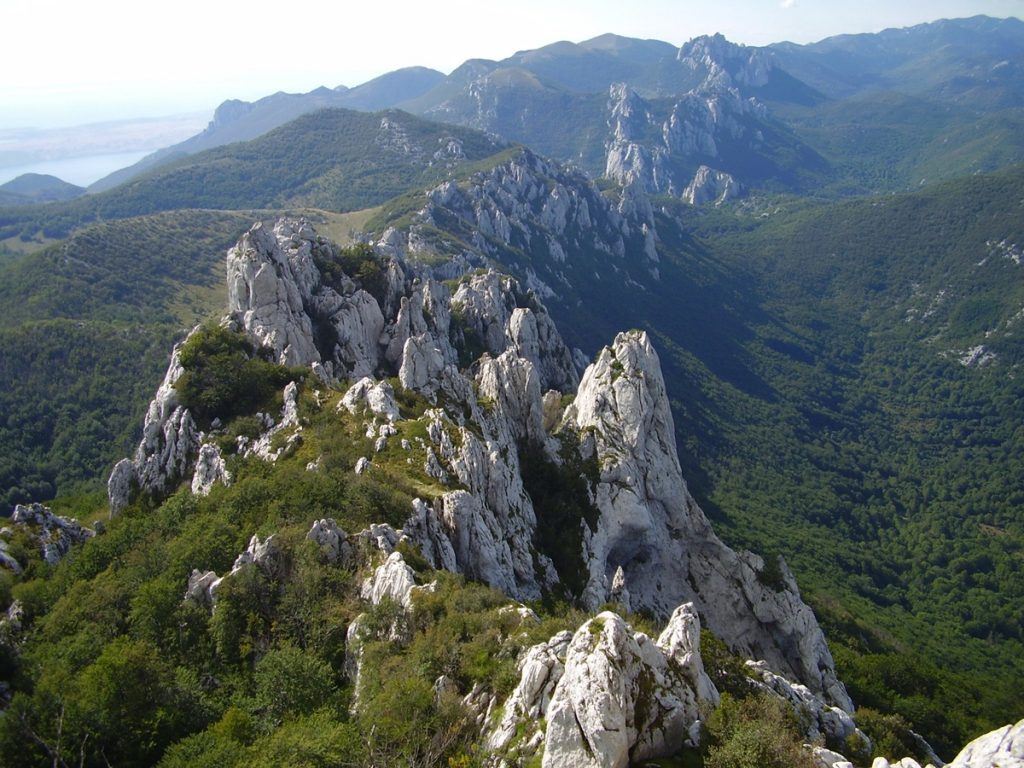National park Northern Velebit is the youngest of all Croatian parks. It was proclaimed one in 1999 due to its diversity of flora and fauna and special karstic attributes. As its name says, it is part of the largest Croatian mountain Velebit, and covers 109 km2 (42 mile2) of it.
Northern Velebit is special for two reservations — Hajdučki and Rožanski kukovi, situated within a karstic area of undefined and untouched beauty with numerous caves.
The most famous one is Luka’s pit. It is special for its depth (1392 meters/1522 yards) and represents the 8th deepest cave in the world. Apart from the two mentioned reservations, two botanical ones are also located there. They are home to a few endemic species.
The peak Zavižan with its meteorological station is also a part of this park. No, we cannot forget the peak Veliki Kozjak — it gives a magnificent, breathtaking view of the whole northern and central Velebit. The park is rugged with paths and the most commonly known one is Premužićeva staza.
It is worth mentioning that this national park is not open for visitors. Actually, just one path of it is available for the explorers. But its surroundings represent a rocky heaven for the alpinists. It leads through the most beautiful parts of the park giving a spectacular view on the islands Pag, Rab, Krk…
Velebit in general is special for its forested areas. Northern Velebit is interlaced with a variety of trees — oak, beech, pine, elm… It also preserves a couple of endemic and endangered species — Croatian sibbirhaea (Hrvatska sibireja), Velebit degenia (Velebitska degenija)… No matter how weird it might sound, this park is home to fungi as well.
Bears, wild cats, lynxes, wolves — they seem to like living there; cold winters and warm summers are quite suitable for them. Of course, some species tend to hibernate during the winter days. It is not only a place for mammals — Velebit lizard is an endemic species. A variety of birds like jumping and flying from branch to branch.
Since this is Croatia’s youngest national park, it has not been completely explored.


